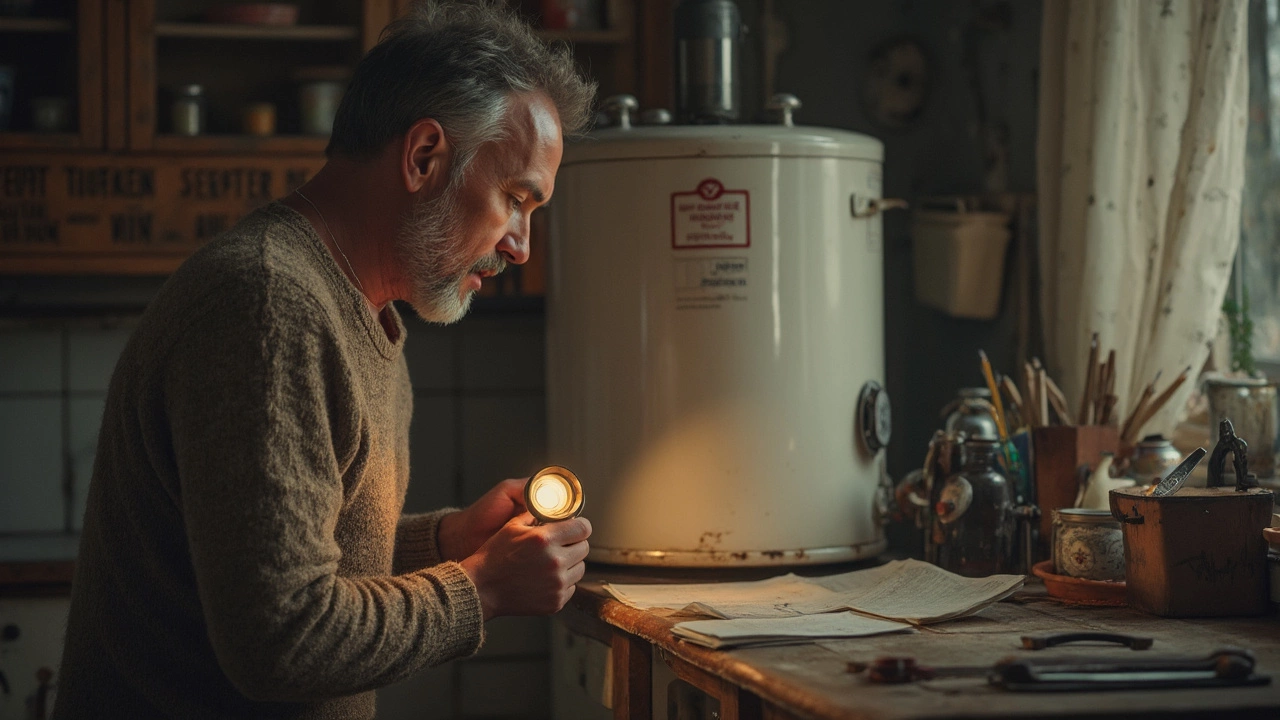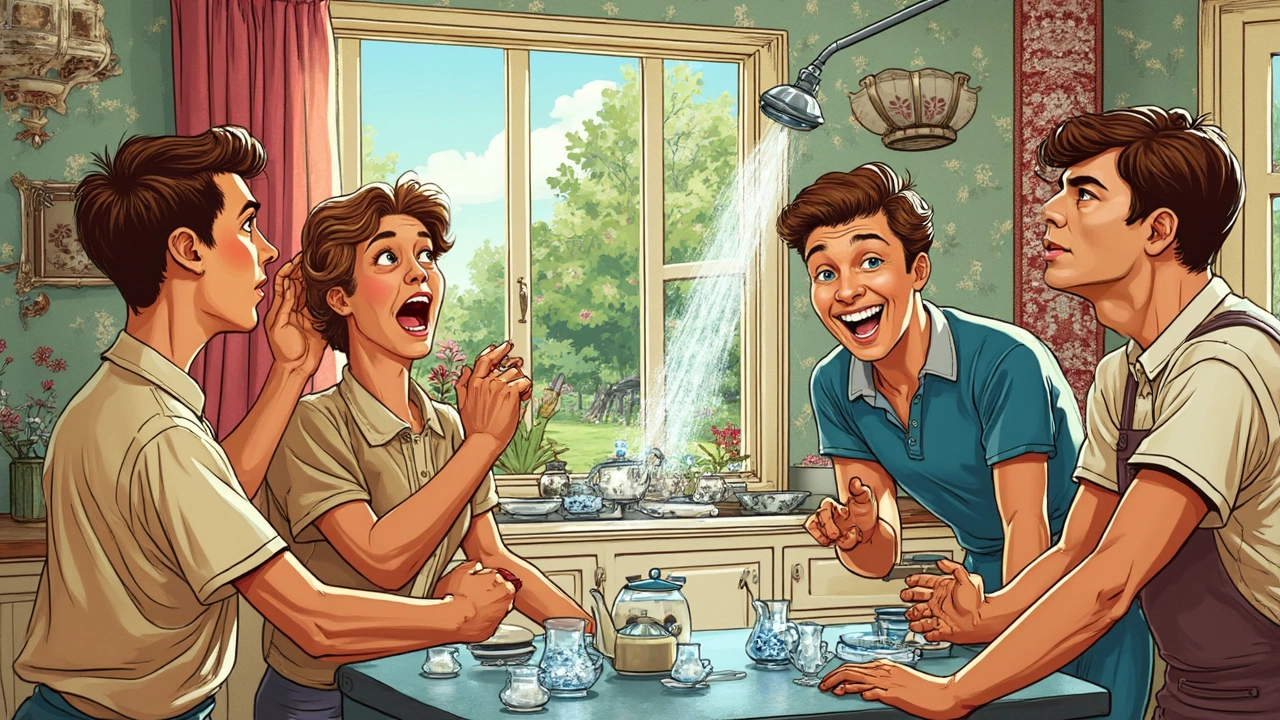You know what's not fun? A surprise ice-cold shower. That's usually the first nudge that your trusty water heater might be failing its duties. Identifying a troubled water heater can save you from chilly inconveniences and possibly a lightening wallet. So, what are the telltale signs you should be keeping an eye out for?
Let's kick things off with strange noises. If your water heater starts making sounds reminiscent of a rock concert, it's probably not auditioning for a band. Rumbling, pops, or banging noises are telltale signs of sediment buildup. When the heating element is surrounded by this gunk, it struggles to work properly.
Strange Noises
Ever hear your water heater make noises that hit all the wrong notes? It can be downright spooky—or downright annoying. These sounds are often a message from your heater, telling you something's off.
Most commonly, water heaters rumble, pop, or make banging sounds when sediment, or gunk as some folks call it, builds up at the bottom of the tank. Water heater problems often start here. This sediment traps hot water beneath it, causing bubbles to pop noisily as they rise. Over time, this sediment layer grows thicker, forcing your heater to work harder and less efficiently.
- Popping: This sound, much like popcorn, comes from steam bubbles escaping through the sediment.
- Rumbling: This suggests a hefty build-up. As the water heats, it moves the sediment around, creating that disturbing noise.
- Banging: Could be a result of hardened sediment chunks bouncing around—like a kid playing marbles in there.
If you're consistently hearing these strange noises, consider flushing your water heater to remove the sediment. You can do this by following a few simple steps:
- Shut off the heater and water supply.
- Connect a garden hose to the drain valve, placing the other end outside or in a suitable drain receptacle.
- Open the valve and let the water (and sediment) drain out.
- Refill the tank and turn the heater back on.
Consistent maintenance like this keeps your heater purring smoothly and extends its life. So next time your water heater starts its strange serenade, you'll know exactly what to do!
Inconsistent Temperature
If you're finding that your showers swing from scalding hot to freezing cold in the blink of an eye, your water heater might be sending you a distress signal. This fickle behavior isn’t just annoying—it's often the first hint at deeper water heater problems.
Temperature issues can come from a variety of sources. It might be something as small as a faulty thermostat or heating element. Over time, these components can wear out or break, leading to water that's not properly heated. It could also be a sign of sediment build-up within the tank. Sediment acts like a barrier between the heating elements and the water, causing uneven heating.
In gas heaters, inconsistent temperature might point to a problem with the burner or pilot ignition. If they aren't functioning correctly, the water might not heat as it should. Electric water heaters, on the other hand, might suffer if their heating elements become coated with mineral deposits.
So, what can you do? Start by checking the thermostat to make sure it's set to your desired temperature—normally around 120°F (49°C) is ideal for most households. If adjusting the thermostat doesn’t help, it might be time to call in a professional. They can inspect and test the essential components and see if a simple repair or a bit of maintenance can get things back in balance.
Regular flushing of your water heater can also preemptively stop some of these issues. This process helps remove sediment build-up before it becomes problematic.
Staying aware of these signs and acting promptly when you notice them can keep your water heater in good shape and your showers comfortably warm.

Rusty Water
Ever turned on the tap and seen water that looks more like it belongs in a horror movie? If the water coming from your hot tap is looking a bit rusty, it’s not just an aesthetic issue—it's a warning sign your water heater might be on the verge of retirement. Rusty water can either come from your pipes or your heater’s tank.
How do you figure out which it is? Here's a simple way: Fill several buckets of water from both your hot and cold taps. If only the hot faucet is delivering rusty water, your heater's probably the culprit.
Over time, water heaters begin to rust from the inside. They have something called an anode rod which is like the gatekeeper that prevents rust. But here's the kicker—it doesn’t last forever. As it wears out, rust can start forming inside the tank. You can replace the anode rod to extend the life of your water heater, but if rust has already started invading, a replacement might be on your to-do list.
| Condition | Action |
|---|---|
| Anode rod intact | Replace the rod |
| Visible rust on tank exterior | Consider replacement |
Neglecting this can turn your trusty heater into an appliance that leaks, leading to bigger messes and even more costly repairs. Keeping an eye on your water's color can save you from future headaches!
Leaks Around the Heater
Noticing puddles around the base of your water heater? That's a red flag you shouldn't ignore. Leaks usually mean something is amiss, and fixing them early can save you from more serious hassles down the road.
First off, check for any loose connections. Sometimes, the fittings or valves can just loosen over time, leading to unwanted drips. A quick tightening might do the trick if you catch it early.
However, if everything is snug and you're still seeing water, the culprit could be a more severe issue like a corroded tank. Water heaters can develop rust from the inside out, eventually leading to leaks. When the tank itself is the problem, it's often time to consider a replacement.
Another potential source is the pressure relief valve. If the pressure inside becomes too high, the valve will let out water to prevent a bigger problem. But if this is happening often, get a professional to check the pressure levels. High pressure could mean your heater is on its last legs.
Here's a quick breakdown of what to check when you spot a leak:
- Tighten all connections and fittings.
- Inspect the tank for rust or corrosion signs.
- Check the pressure relief valve for frequent discharge.
Leaking around the heater isn't just messy; it can spike your water bills and signal a heater that's not quite as hot on life as it used to be. Keep an eye out for these signs so you can stay ahead of potential headaches.

Decreased Water Flow
Ever turned on the tap and suddenly it feels like you’re watering your garden with a leaky hose? That’s a dead giveaway of decreased water flow, and it could mean your water heater isn’t in tip-top shape. Now, there could be a few reasons why your flow's gone sluggish, and they mostly start inside the tank.
Over time, minerals from the water can build up in your heater. These mineral deposits form a thick layer of sediment that can clog up your water line, reducing the space for water to flow. Imagine trying to sip a milkshake through a straw filled with pebbles – not very effective, right?
Another prime suspect could be issues with the pipes. If your home’s plumbing is older, corrosion might be restricting flow. Corroded pipes get narrower over time, making it tough for water to pass through easily. A quick check with a flashlight might let you catch any rusty spots.
To tackle all this, start by draining your water heater regularly to flush out the sediment. Here’s a quick rundown:
- Turn off the heater and let it cool.
- Attach a hose to the drainage valve.
- Run the hose to a safe drainage area, then open the valve.
- Once drained, flush with water to clear out remaining sediment.
If you're not up for a DIY, getting a professional to take a look isn't a bad call either. They can check the anode rod, a critical yet often overlooked part that prevents tank rust. Replacing it every few years can make a significant difference in maintaining water flow health. If replacing pipes is on the cards, consider upgrading to PEX piping – it’s resistant to buildups and might just be what your setup needs.


